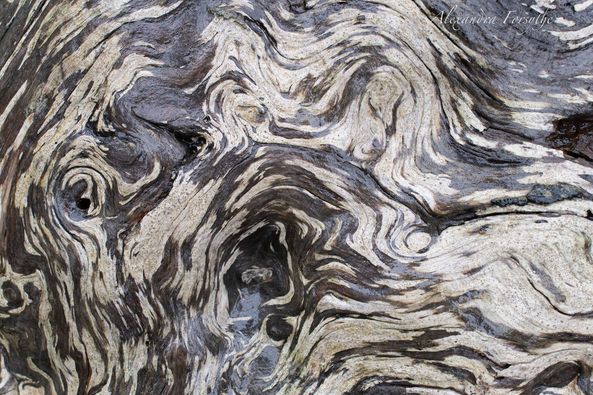Nature's daylight, woodland version of Van Gogh's "Starry Night". I encountered this burl wood during a recent hike. Burl wood is gorgeous, but what is it and what causes it?
A burl is a knobby-looking growth on a tree. It usually forms when the tree is under stress from an injury, virus, bacteria, fungus, or insects. The stress disrupts a portion of the vascular cambium and it divides rapidly and irregularly like a tumor, causing the wood inside the growth to form a gnarled pattern.
Burls range in size from very small to multiple feet in diameter, and there are different kinds. Live or tree burls are usually small and are found on the sides of the tree. Crown burls form at the base of a tree. Stump burls are usually the largest and are found in the root system.
Because each piece of burl wood is uniquely beautiful, it is prized by artisans. The burl colors usually grow deeper with age, and the largest, most colorful burls are often 30-years old or more.
A burl is a knobby-looking growth on a tree. It usually forms when the tree is under stress from an injury, virus, bacteria, fungus, or insects. The stress disrupts a portion of the vascular cambium and it divides rapidly and irregularly like a tumor, causing the wood inside the growth to form a gnarled pattern.
Burls range in size from very small to multiple feet in diameter, and there are different kinds. Live or tree burls are usually small and are found on the sides of the tree. Crown burls form at the base of a tree. Stump burls are usually the largest and are found in the root system.
Because each piece of burl wood is uniquely beautiful, it is prized by artisans. The burl colors usually grow deeper with age, and the largest, most colorful burls are often 30-years old or more.

